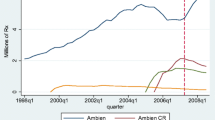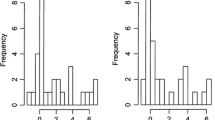Abstract
New drug reimbursement is a high stakes game and price is the mechanism whereby the new drug’s innovative surplus is apportioned between consumers and producers. Some countries use the results of cost-effectiveness analyses to inform the pricing decision. These countries express the result of a cost-effectiveness analysis as a price per effect and compare it to a decision threshold; a price above which the regulator will consider rejecting the new drug. Typically, if a decision threshold is lower that the firm’s preferred price (FPP) and there is a possibility of rejection, a firm will mount an evidence based case as to why the final drug price should not be below the threshold. There is a plethora of texts and guidelines available to regulators and health economic analysts on the methods of cost-effectiveness analyses of new drugs and the choice of decision thresholds. There are few, if any, formal texts available to guide regulators as to the optimal response to the claim that prices below the FPP are not in the population’s best interest because the benefits of cost saving today are offset by the loss of future health due to less innovation. This chapter introduces four rules and four tools which, if applied by regulators, will maximise the present value of the population’s health. A key theme is introduced: a strategy used by firms in the new drug reimbursement game is the threat that lower prices are not in the interest of the population.
Access this chapter
Tax calculation will be finalised at checkout
Purchases are for personal use only
Similar content being viewed by others
Notes
- 1.
Throughout this book I use the term “new drug price” in the context of new drug prices generally. If a specific price is referred to I use the term “the price of the new drug” or “the new drug’s price”. See “Glossary of Phrases”.
- 2.
Kefauver was a US Congressman then Senator from 1939 to his death in 1963. He chaired a number of significant US Senate Committees, including a 1950 committee on organised crime. The Kefauver Committee of 1959 was motivated by the “excess profits” of the US pharmaceutical industry. It was seen as an antitrust (market power) Committee rather than a drug safety and quality regulation Committee. His work on this Committee resulted in the Kefauver-Harris Drug Act of 1962. This committee explored the nature and consequences of market power and rent seeking in the pharmaceutical industry. Amongst other things, it challenged the pharmaceutical industry’s payments to the American Medical Association in terms of the implications this would have for objective scientific reporting of new drugs. For further information, a good place for an economist to start is Comanor (1966).
- 3.
See for example, Gibbons (1992), p. 56.
- 4.
Of course this is a simplistic definition of the objective of a health care system. The main point is that this system does not explicitly value the following as part of the drug reimbursement process: the technology that is used to deliver the health gains. That is, whatever it is that the health system values, it is irrelevant to the Reimburser’s decision whether the outcome is obtained using the newest drug or conventional old tech therapies. Specifically, this excludes the possibility that a clinical or institutional decision maker will be prepared to pay for “novelty”. The possibility that this is the case is raised in the Conclusion.
- 5.
Relative to the early adopters (Australia and Canada) some European countries are late adopters of routine use of economic evaluation to inform drug decisions (post 2000), and the US is still to adopt this practice. How early did Australia and Canada start using economic evaluation of pharmaceuticals? From the 1994 first edition of the Canadian Economic Evaluation Guidelines: “Australia was the first country to develop and implement guidelines for the economic evaluation of pharmaceuticals. Draft guidelines were released in 1990, revised in 1992, and are currently going through the process of second revision. In Canada, the process for developing these guidelines began when the Province of Ontario issued draft guidelines for comment in the Fall of 1991. During 1992 it was determined that it would be useful to develop a set of Canadian guidelines, that each Province could adopt, with or without modifications, as they saw fit” (Canadian Coordinating Office for Health Technology Assessment 1994).
- 6.
A summary of the issues is contained in Harvey et al. (2004).
- 7.
A second important exception was the statement by Prof. Gerard Anderson, of John Hopkins. His oral statement and the resultant discussion with the Joint Committee Hearing are both reproduced as Attachment 2. These excerpts capture the drama and intensity of the political economy of new drugs perfectly. And finally, Prof. Alan Sager (2003) from Boston School of Public Health gave a presentation in 2003 (around the same time) which summarises the issues regarding access from the position of the US.
- 8.
See discussion of this issue in Chap. 4.
- 9.
- 10.
See for example (Giaccotto et al. 2005) which accessed a data set from Pharmaceutical Researcher and Manufacturers of America (PhRMA) that is not in the public domain.
- 11.
This preference for using the maxWTP as a threshold price (or “value for money” as a criterion) for adoption and reimbursement probably continues in many institutions. Since 1992 Birch and Gafni have pointed out that this strategy will not maximise a population’s health from a given budget, unless the budget is sufficiently large to accommodate all programs that are value for money or that the budget continues to increase to accommodate these programs and technologies.
- 12.
The National Institute for Health and Clinical Excellence (2007) provides a summary of the issues.
- 13.
The budgetary impact is the net additional cost of adopting the new drug. The proposed threshold of d will be a function of budgetary impact if the cost per effect of displaced services changes as the amount of services displaced increases. This is in contrast to the most prominent option for the threshold k, the maximum willingness to pay for a health effect, which is exogenous to the state of the health budget.
- 14.
For a description of both the narrative and the associated economic model of the Prisoner’s dilemma, see Gibbons (1992).
- 15.
Without evidence of ICERs of all the health programs and technologies, this statement is difficult to prove. Certainly there are services that can be considered “cost ineffective” that are currently funded and could be disinvested. There are also other services that are cost-effective and that could be funded (Weinstein 2008). My point is simply that we cannot act as if health budgets are unconstrained, or are constrained only by some lay measure of “value for money” which is typically insensitive to changes in competition in the market for health inputs (See Chap. 3). Furthermore, an important theme in this book is that the choice of price by a firm that is a patent holder and has some monopoly power is endogenous to the choice of threshold; if a given threshold is imposed, firms with technologies that have ICERs greater than this threshold have the option to lower their price in order to make them “cost-effective”. Therefore, technologies with ICERs greater than a given threshold will not necessary remain unfunded if that threshold is imposed (see Chap. 6). And finally, choice of a threshold needs to involve recognition of the budget constraint. Weinstein (2008) made a direct association between the US’s preference for not applying CEA and decision thresholds and the lack of willingness of Americans to recognise they cannot Supply all citizens with “effective health care services”.
References
Birch S, Gafni A (1992) Cost effectiveness/utility analyses: do current decision rules lead us to where we want to be? J Health Econ 11(3):279–296
Birch S, Gafni A (1993) Changing the problem to fit the solution—Johannesson And Weinstein (mis) application of economics to real-world problems. J Health Econ 12(4):469–476
Buchanan J (2008) Opportunity cost. In: Durlauf S, Blume L (eds) The new Palgrave dictionary of economics online, 2nd edn. Palgrave Macmillian, New York. doi:10.1057/9780230226203.1222
Canadian Coordinating Office for Health Technology Assessment (1994) Guidelines for economic evaluation of pharmaceuticals, 1st edn. CCOHTA, Ottawa, ON
Comanor W (1966) The drug industry and medical research: the economics of the Kefauver Committee investigations. J Bus 39(1):12–18
Comanor WS (1986) The political economy of the pharmaceutical industry. J Econ Lit 24(3):1178–1217
Culyer A, McCabe C, Briggs A, Claxton K, Buxton M, Akehurst R, Sculpher M, Brazier J (2007) Searching for a threshold, not setting one: the role of the National Institute for Health and Clinical Excellence. J Health Serv Res Policy 12(1):56–58. doi:10.1258/135581907779497567
Devlin N, Parkin D (2004) Does NICE have a cost-effectiveness threshold and what other factors influence its decisions? A binary choice analysis. Health Econ 13(5):437–452
Drummond MF (1992) Basing prescription drug payment on economic analysis: the case of Australia. Health Aff (Millwood) 11:191–196
Finance Committee US Senate (2004) International trade and pharmaceuticals. Finance Committee US Senate, Washington, DC
George B, Harris A, Mitchell A (2001) Cost-effectiveness analysis and the consistency of decision making: evidence from pharmaceutical reimbursement in Australia (1991 to 1996). PharmacoEconomics 19(11):1103–1109
Giaccotto C, Santerre RE, Vernon JA (2005) Drug prices and research and development investment behavior in the pharmaceutical industry. J Law Econ 48(1):195–214
Gibbons RS (1992) A primer in game theory. Prentice Hall, Essex
Harvey K, Faunce T, Lokuge B, Drahos P (2004) Will the Australia–United States free trade agreement undermine the pharmaceutical benefits scheme? Med J Aust 181(5):256–259
International Trade Administration (2004) Pharmaceutical price controls in OECD countries: implications for U.S. consumers, pricing, research and development, and innovation. International Trade Administration, Washington, DC
Johannesson M, Weinstein MC (1993) On the decision rules of cost-effectiveness analysis. J Health Econ 12(4):459–467
McCabe C, Claxton K, Culyer AJ (2008) The NICE cost-effectiveness threshold: what it is and what that means. PharmacoEconomics 26(9):733
McKean RN (1972) The use of shadow prices. In: Layard R (ed) Cost benefit analysis. Penguin, Harmondsworth, pp 119–139
Mishan E, Quah E (2007) Cost-benefit analysis, 5th edn. Routledge, Abingdon
Reinhardt U (2007) The pharmaceutical sector in health care. In: Sloan F, Hsieh C-R (eds) Pharmaceutical innovation: incentives, competition, and cost-benefit analysis in international perspective. Cambridge University Press, Cambridge
Sager A (2003) Three futures for the US pharmaceutical industry. http://dcc2.bumc.bu.edu/hs/Upload061203/Sager%20talk%20Oxford%20-%20Chatham%2030%20May%2003%20final.pdf Accessed 12 Dec 2013
Sendi P, Gafni A, Birch S (2002) Opportunity costs and uncertainty in the economic evaluation of health care interventions. Health Econ 11(1):23–31
The National Institute for Health and Clinical Excellence (2007) Briefing paper for the methods working party on the cost effectiveness threshold. http://www.nice.org.uk/media/4A6/41/CostEffectivenessThresholdFinalPaperTabledAtWPMeeting5Sep3907KT.pdf. Accessed 12 Dec 2013
Vernon JA, Goldberg R, Golec JH (2009) Economic evaluation and cost-effectiveness thresholds: signals to firms and implications for R&D investment and innovation. PharmacoEconomics 27(10):797–806
Weinstein MC (2008) How much are Americans willing to pay for a quality-adjusted life year? Med Care 46(4):343–345
Author information
Authors and Affiliations
Rights and permissions
Copyright information
© 2015 Springer International Publishing Switzerland
About this chapter
Cite this chapter
Pekarsky, B.A.K. (2015). Introduction. In: The New Drug Reimbursement Game. Adis, Cham. https://doi.org/10.1007/978-3-319-08903-4_1
Download citation
DOI: https://doi.org/10.1007/978-3-319-08903-4_1
Published:
Publisher Name: Adis, Cham
Print ISBN: 978-3-319-08902-7
Online ISBN: 978-3-319-08903-4
eBook Packages: MedicineMedicine (R0)




